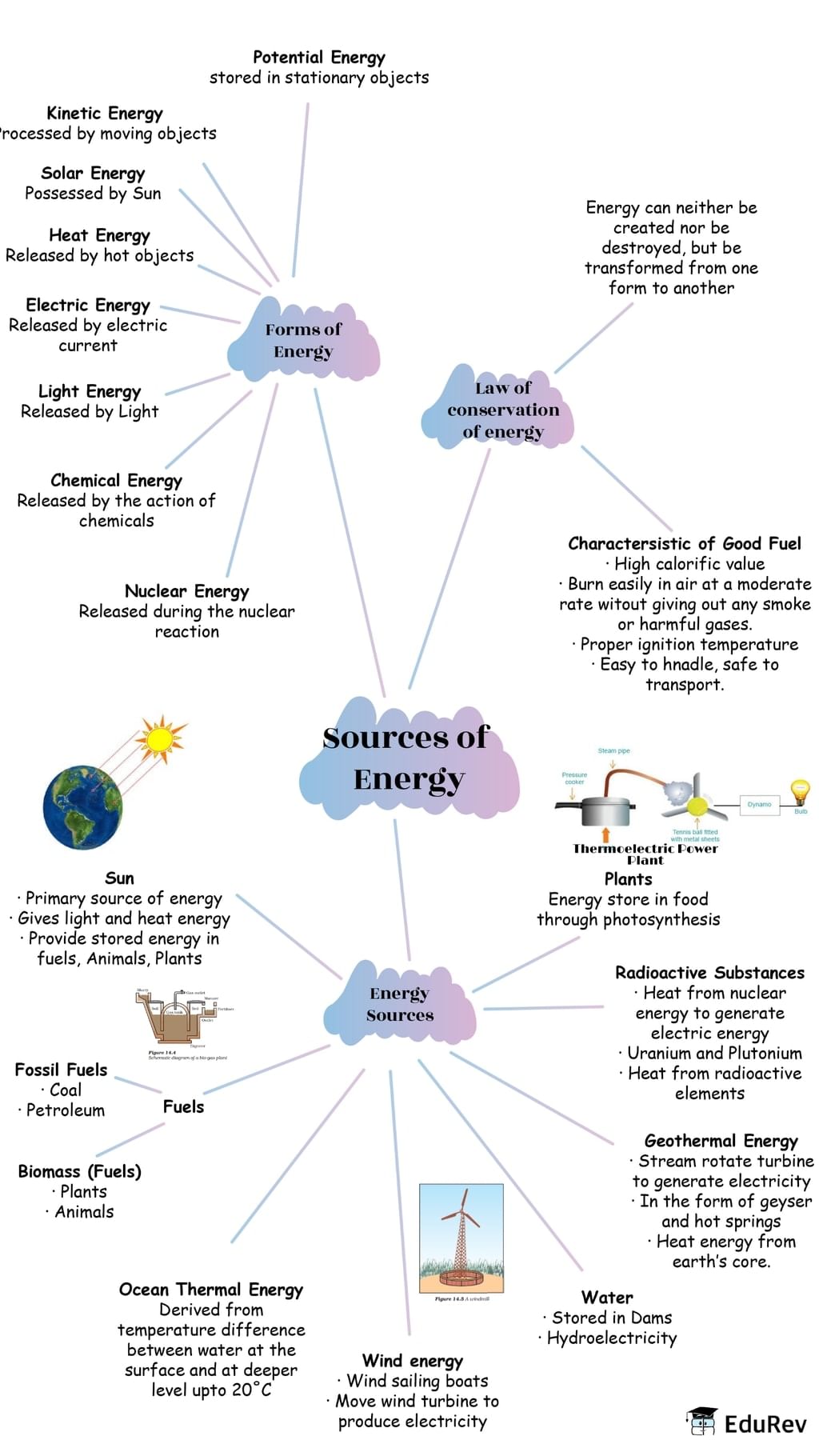Class 10 Exam > Class 10 Notes > Physics for Class 10 > Mindmap: Sources of Energy
Mindmap: Sources of Energy | Physics for Class 10 PDF Download

The document Mindmap: Sources of Energy | Physics for Class 10 is a part of the Class 10 Course Physics for Class 10.
All you need of Class 10 at this link: Class 10
|
23 videos|67 docs|58 tests
|
FAQs on Mindmap: Sources of Energy - Physics for Class 10
| 1. What are the different sources of energy? |  |
Ans. The different sources of energy include fossil fuels (such as coal, oil, and natural gas), nuclear energy, renewable energy sources (such as solar, wind, hydro, and geothermal power), and biomass.
| 2. How does solar energy work? |  |
Ans. Solar energy works by harnessing the power of sunlight and converting it into usable electricity through the use of solar panels. These panels contain photovoltaic cells that absorb sunlight and convert it into direct current (DC) electricity, which is then converted into alternating current (AC) electricity for use in homes and businesses.
| 3. What is nuclear energy and how is it produced? |  |
Ans. Nuclear energy is produced through a process called nuclear fission, where the nucleus of an atom is split to release a large amount of energy. This energy is used to heat water and produce steam, which drives turbines connected to generators to produce electricity. Nuclear power plants use uranium or plutonium as fuel for the fission process.
| 4. How does wind energy work? |  |
Ans. Wind energy works by harnessing the kinetic energy of the wind and converting it into electricity. This is achieved through the use of wind turbines, which have large blades that spin when the wind blows. The spinning motion of the blades drives a generator, which produces electricity. Wind energy is a renewable source of energy that does not produce air pollution or greenhouse gas emissions.
| 5. What are the advantages of using renewable energy sources? |  |
Ans. There are several advantages of using renewable energy sources. Firstly, they are environmentally friendly and do not produce harmful emissions that contribute to climate change. Additionally, renewable energy sources are sustainable and can be replenished naturally, unlike fossil fuels which are finite resources. They also provide economic benefits by creating jobs in the renewable energy industry and reducing dependence on imported fuels.

|
Explore Courses for Class 10 exam
|

|
Signup for Free!
Signup to see your scores go up within 7 days! Learn & Practice with 1000+ FREE Notes, Videos & Tests.
Related Searches

















